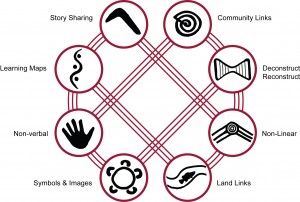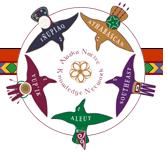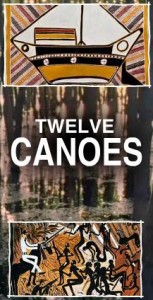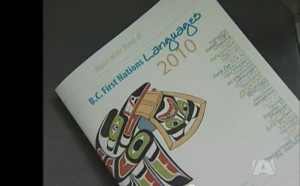The First Peoples’ Cultural Foundation
The First Peoples’ Cultural Foundation

The site was created with the recognition that First Peoples’ languages are in peril. With that acknowledgment, there are two stated purposes.
One part of the site is the First Voices language archives the documentation of languages. Rather than simply recording and flash freezing (Littlebear, 1996) the languages, the purpose here is to use the recorded language as a learning tool. This program has been running since 2003 with funding from the province of British Columbia and the Department of Canadian Heritage. So far they have archived less than 5% of the potential languages.
The other main section is the Aboriginal Languages Initiative. Summarized on the page:
The Aboriginal Languages Initiative (ALI) is a federal program funded by the Department of Canadian Heritage. The ALI provides funding support for community and regionally-based projects directed at maintaining, revitalizing and promoting First Nations languages. ALI funds are distributed to provincial and territorial delivery organizations. http://www.fpcf.ca/ali2010forms/index.htm
This section has an application system for interested groups to request participation.
The site gives hope that there is enough interest to possibly save some languages that are on the verge of extinction.
Littlebear, R. (1996). Preface. In G. Cantoni (Ed.), Stabilizing indigenous languages. Flagstaff: Northern Arizona University, Center for Excellence in Education.
November 22, 2010 No Comments
Traditional Knowledge Revival Pathways
Looking for more information about place-based education, I came across this You Tube video describing the importance of securing traditional knowledge for the benefit of community and country. The 5 minute, 36 second video was created by Luke Stanford, narrated by Victor Steffensen and filmed in Australia.
Some of the themes discussed are:
- The importance of showing a visual of what the elders are trying to explain
- Understanding that different forms of language + body + verbal are all significant and must be preserved
- That Aboriginal knowledge is not recognized by the mainstream and therefore an even greater sense of urgency to preserve this knowledge
- A sustainability theme where we’re not just saving this knowledge for Aboriginal people but for all – i.e. Aboriginal knowledge as a means to better understand global warming and other environmental issues
- People are currently detached from the environment but in reality “Man is not different from nature, Man is nature”
October 18, 2010 No Comments
Aboriginal children : the healing power of cultural identity
After viewing the Lee Brown video, I was particularly interested in reading more about linkages between cultural identity and educational success. During my reading I came across a Public Health Agency of Canada Website entitled: Aboriginal Children: the healing power of cultural identity.
This site describes several aboriginal initiatives across Canada that are working to promote cultural identity in Aboriginal children, the devastating effects of past injustices such as residential schools, how communities are working together to help restore identity, and the importance of elders to the processes. The site concludes byoffering the following list of suggestions aimed to foster a child’s sense of identity:
- Learn as much as you can about the specific culture of the child – its traditions, strengths and challenges. Aboriginal cultures are diverse (there are approximately 50 different Aboriginal cultural groups in Canada) and there is also diversity within each community.
- Try to balance the physical, mental, emotional and spiritual dimensions of the child.
- Support the child to learn and maintain his traditional language.
- Provide regular opportunities for her to take part in traditional activities. Fish, gather berries, prepare and eat traditional foods together.
- Provide regular opportunities for him to take part in community events. Attend ceremonial and ritual events.
- Encourage meaningful interaction with Elders from her community. Children can learn respect and wisdom from Elders.
- Support him to learn traditional stories and legends.
- Provide her with books, videos, traditional games, dance and music that reinforce her traditional, family and daily life.
- Speak frankly to him about discrimination.
- Network with other Aboriginal parents, colleagues and Elders to share experiences and ideas.
http://www.phac-aspc.gc.ca/dca-dea/programs-mes/aboriginal-autochtones-eng.php
October 18, 2010 No Comments
Aboriginal Contexts and Worldviews
Alternative Dispute Resolution (ADR) in Aboriginal Contexts: A Critical Review
Prepared by Wenona Victor (Sto:lo Nation) for Canadian Human Rights Commission, April 2007 (41 pages).
http://www.chrc-ccdp.ca/pdf/adrred_en.pdf
I came across this document when one of our discussion threads led to sharing meanings of “Indian Time.” The title also caught my attention as I had recently read this statement in John Ralston Saul’s book A Fair Country (2008): “our courts are far ahead of our political scientists, politicians and philosophers…[they] have now understood the First Nations’ assumptions at the time of the treaties” (p. 64).
In discussing alternative dispute resolution (ADR), Wenona Victor draws on current studies and reflections about Aboriginal contexts related to the role of power, language, women’s voices, culture and land; and the contrast of worldviews including concepts of individuality, unity of life, time, societal organization, leadership, reciprocity. “By posing both theoretical and practical questions, the text is a means by which colonial assumptions maybe be deconstructed. This analysis is helpful in shedding light on several colonial assumptions that often feed, and in many instances impede, the proper resolution of disputes between two often diametrically opposed worldviews” (p. 7).
This document informed me on other matters in addition to “relationship building in ‘Indian’ time” (p. 29). For example, my thinking was challenged in the section about the “elicitive” approach to mediation (i.e. an approach requiring the mediator to take the lead from the parties involved and recognize the process as both a functional and political one) and the Western cultural presuppositions involved in the belief that “the best mediator will be an outsider, impartial and unbiased” (p. 30). As an example that “claiming Western norms and values as universal undermines” a process like mediation, the author writes, “oral tradition within Indigenous communities…often dictates who can and cannot speak on a subject. Those who are considered impartial and neutral are also disconnected and lack personal involvement; they are therefore not authorized to speak” p. 32).
October 13, 2010 No Comments
8 Ways
I came across this site while searching “aboriginal education”. It is a site designed and maintained by the Western New South Wales Regional Aboriginal Education Team and James Cook University in Australia. It is a pedagogical framework for teachers to be able to teach Aboriginal students in a meaningful way. It discusses and has resources about Aboriginal perspectives and how to include them into the core curriculum that is set by the school boards and governments.
October 11, 2010 No Comments
Alaska Native Knowledge Network


This site states its purpose as “resources for compiling and exchanging information related to Alaska native knowledge systems and ways of knowing.” There are lot of resources concerning curriculum, information on cultural research systems, and cultural maps.
October 11, 2010 No Comments
4 Directions Teachings
This site is by Canadian Heritage. Its objective is “a visually stunning audio narrated resource for learning about 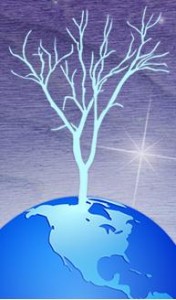 Indigenous knowledge and philosophy five diverse First Nations in Canada”.
Indigenous knowledge and philosophy five diverse First Nations in Canada”.
October 11, 2010 No Comments
New South Wales Aboriginal Ed
Here’s a site from the New South Wales Government in Australia. It is dedicated to Aboriginal Education. It provides examples of context-based teaching and learning projects to be used. It is obvious that the values of the Aboriginal people are considered. They address Aboriginal art and languages, and contextualize math, science, and literature for the students.
October 11, 2010 No Comments
12 Canoes
I found this site that is to educate people about the Yolngu people of Ramingining in Australia’s Northern Territory. The website is a great use of technology and educating others. They have provided a study guide for teachers and students. It is quite interactive and divides up the culture so that you can explore the art, music, the people, etc. It shows what is important to the people in a very easy to follow way.
October 11, 2010 No Comments
Saving First Nations Languages
This You Tube video talks about the status of First Nations languages in B.C. The commentary is based on the recently released “Report on the Status of B.C. First Nations Languages 2010”. This First Peoples Council report states that the Vancouver Island First Nation languages are in a “critical state” and further that there is an “urgent need to protect BC’s 32 First Nations languages. Of these languages, a handful are stated to be “severely in danger” with the majority being already nearly extinct. To put this in perspective, BC is reportedly home to 60% of the Indigenous languages of Canada.
The video clip includes interviews with a Central Saanich student, a Lauwelnew Tribal School Teacher and a Tsartlip Elder. Some positive steps towards language recovery are also described.
To view the video: https://www.youtube.com/watch?v=KzfgvqkoTVM
To view the report: www.fphlcc.ca
September 25, 2010 No Comments

